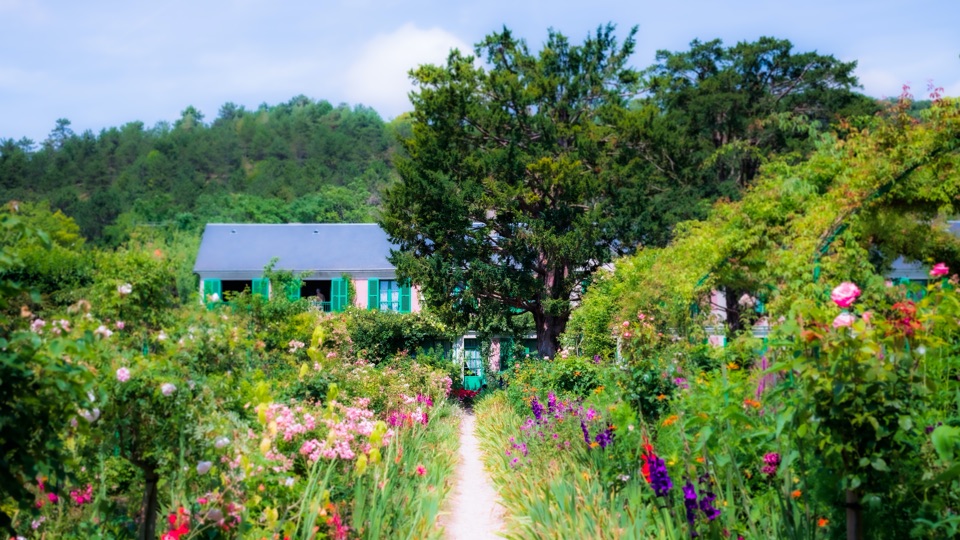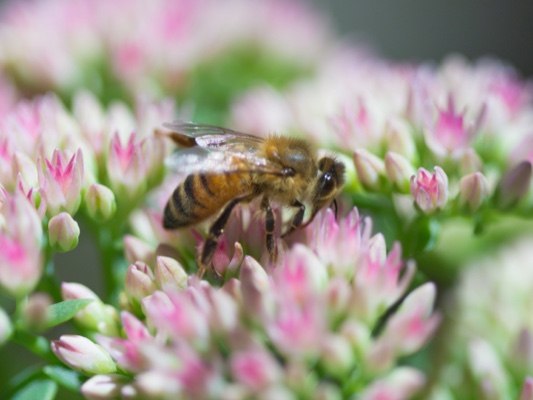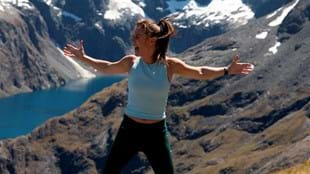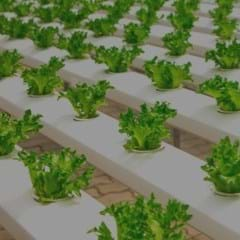As anyone who’s let the weeding get a bit out of hand knows, it doesn’t take long for nature to reassert itself once humans step aside. When we stop pruning, trimming, spraying, and pulling out all the plants that don’t meet our standards, they quickly take over: pushing through paths, pulling down fences, and crawling through window frames, engulfing the human world and bringing it back into the earth. And when plants come back, insects, birds, and animals do too.
Stop pruning, trimming, spraying … Let plants grow wildly. When plants come back, insects, birds, and animals do too.
An untidy lawn was once a cause for urban shame, but now there’s a movement that specifically encourages humans to take a breath and let the weeds win, encouraging native insects, birds, and animals along the way. It’s called rewilding, and the idea is spreading across the world as people let natural processes build a healthier, more biodiverse environment, as opposed to the strenuous intervention of targeting particular species or environmental goals, “locking up” areas of national conservation estate. The only goal with rewilding is to let things take care of themselves.

The term “rewilding” first appeared in print in 1990. It was initially quite a fringe movement, and used to encourage the ecological benefits of “cores, corridors, and carnivores”. That meant establishing wildlife centers, natural corridors through which they could move, and introducing large carnivores to spaces where they used to be endemic, such as wolves, bears, and lynxes.
The word entered the dictionary in 2011, and it was further popularized by English environmental writer George Monbiot’s 2013 book Feral, which encouraged embracing fluctuations in the natural landscape and allowing ecological processes to do their thing, both without human interference.
Monbiot’s book helped seed global interest; he was instrumental in setting up the Rewilding Britain charity in 2015, and since then the ideas have become quite mainstream. As well as re-introducing native predators to the environment, rewilding can also mean the reintroduction of native plant species and the restoration of entire ecosystems. Broadly, it can be taken to mean allowing natural processes to be reintroduced and work without human intervention. Projects are springing up worldwide.
The estate’s nature rebounded at a rate that astonished everyone, and is now home to some severely endangered birds, plants, and insects.
One early rewilding project was Knepp Estate in England’s West Sussex. Once 3500 acres of struggling farmland, since 2001 its owners have allowed it to revert to nature, introducing grazing animals to help produce new habitat that supported other plants and wildlife, releasing Tamworth pigs, old English longhorn cattle, ponies and deer to mimic the herds of grazers that once roamed Britain. They restored watercourses and stopped plowing, planting, and weeding.

The estate’s nature rebounded at a rate that astonished everyone, and is now home to some severely endangered birds, plants, and insects. Today, ecotourism has become just as big an income earner for Knepp as conventional farming, and the estate even hosts glamping and upmarket treehouse accommodation. Thanks to its lack of apex predators, the land produces tonnes of organic free-range meat instead of conventional crops.
Knepp’s owners were partly inspired by the “Dutch Serengeti” of Oostvaardersplassen, an internationally significant wetland and protected area for birdlife. The 56 square kilometer area includes wetlands and grassed plains where herds of ponies, deer, and cattle roam, mimicking the ecological actions of the original grazers hunted to extinction across Europe.

Netherlands-based charity Rewilding Europe was established in 2011 and is working with local partners to recreate natural landscapes in ten places across Europe, including the Danube Delta, Swedish Lapland, the Central Apennines, and the southern Carpathians. The projects are bringing back species such as bison to Romania and wolves and brown bears to Italy.
In the United States, the reintroduction of grey wolves to Yellowstone National Park in the mid-1990s qualifies as a rewilding project. When they were killed off in the 1930s, the park’s ecology became unbalanced; deer and elk began doing too well, and also stopped moving around so much because wolves weren’t hunting them. They over-browsed plants such as willows that other animals, including beavers and songbirds, relied upon.
This is known as a “trophic cascade”, when top predators are added or removed to an environment, causing sometimes unforeseen changes to the ecosystem. Bringing back wolves began resetting the balance again, with flow-on effects that are still astonishing researchers today.
Because there were fewer elk and deer, the willows increased. With them came the songbirds and stabilized riverbanks, with shade and cooler water for some species. Eagles, foxes, and badgers returned, too. Beaver numbers increased, and they built new dams and ponds, helping with the water table, flood protection, and river habitat.
The macaws were previously caged and needed to learn to be afraid of predators by being shown stuffed replicas savaged by cats.
Further south, the instigators of the Iberá project are hoping to achieve similar dramatic results. A 7500 square kilometer rewilding site in north Argentina that began in 2006, it’s a former series of cattle ranches with the fences stripped out, now home to a host of animals that used to roam the area, including jaguars, anteaters, pampas deer, and macaws.
Iberá now has its largest land mammal back – tapirs, a large, herbivorous, short-trunked creature similar to a pig, nearly driven extinct by ranchers and hunters. It’s also the first time in 60 years that jaguars have roamed the land, raising hopes that their numbers can recover from the 200 they dwindled to in the late 1990s.
Some of the animals in the project had to be taught to be wild again; the macaws, for example, were previously caged and needed to learn to be afraid of predators by being shown stuffed replicas savaged by cats.
Rewilding may not be easy to transplant everywhere, however. In some parts of the world, local populations don’t take kindly to the idea of bears and wolves invading their gardens once more. They were hunted to near extinction for a reason.
Parts of the world already suffering from takeover by introduced weeds, pests, and animals run the risk of being overrun by species hardier than natives if humans don’t intervene. In New Zealand, intensive pest control using poisons is the only way the country can manage the problem of introduced stoats, possums, rats, and weasels. If these pests and other problems like exotic weeds can be removed for good, rewilding of native species could begin.
And sometimes, seeing nature red in tooth and claw can be upsetting to the civilized city-dwellers who may live alongside rewilded areas.
Oostvaardsersplassen is fenced and has no corridors other natural reserves. Massive protests have taken place, due to herbivores starving to death because they couldn’t migrate to find food during a tough winter. Despite being part of a natural cycle, animal rights activists who were horrified by the rotting carcasses protested. They threw bales of hay over the fences, and rangers and ecologists faced death threats.
Politically, it’s hard to sell the idea of starving animals – even when their carcasses are part of a natural cycle of decay and decomposition, and in turn, feed natural scavengers large and small. This has led to a culling strategy at the reserve, going against the principles of rewilding, which has in turn sparked protests and court cases. Now, some second-generation rewilding projects have taken animal welfare into account.
What can you do in your own backyard?
Despite the obstacles, the benefits of rewilding can still be felt on a small scale – and it can begin at home. You probably can’t release wild pigs and deer into your home garden, but how can you bring a little rewilding into your own life? Try supporting the “cores and corridors” aspects of rewilding, if not the carnivores. Start by doing nothing, particularly to your lawn. Lawns are a water-thirsty monoculture, a virtual desert for plant and insect life. Let the grass get a little longer, and sow native grasses, flowers and other plants that attract bees, insects, and birds.
Start by doing nothing, particularly to your lawn. Let the grass get a little longer, and sow native grasses, flowers and other plants that attract bees, insects and birds.
Talk to your neighbors to see if you can introduce some wilder spaces to your street, road verges and traffic islands, and local school or park. This is especially important near water bodies such as rivers, estuaries, marshes, and the coast. Local natural corridors will help birds, insects, and animals move between wilderness cores established in other areas. Ask your local authority about their plans for these, and about their spraying and mowing regimes. Could some areas of public parks and reserves be left to go to seed to encourage pollinators such as bees, butterflies, and other insects, which also help attract more birds?
Finally, support rewilding efforts in your country by starting a movement yourself or championing local native environment, conservation, and restoration ideas. This could mean restoring wetlands, supporting responsible dam removal, and considering the effects of a wide variety of pollutants such as industrial waste, too much noise, and light pollution, which can have a drastic effect on native wildlife.
Offer your time, labor, money, and political support, and share projects with family and friends on social media. When nature wins, so do we all.
Naomi Arnold is a New Zealand-based author and writer specializing in environmental and health issues.








